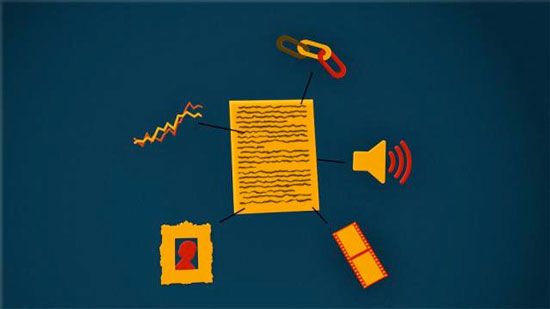What are Enhanced Publications? | Academic Research Edition
Updated May 28th, 2022
Journals have required researchers to share their data for more than two decades. However, these requirements have been limited to specific types of research in the past. With the current growing need to share all data, and the availability to do so, things like enhanced publications are becoming more popular.
And as more agencies, journals, publishers, and research funding institutions require or encourage research data sharing, research data policies were put in place to improve the quality and reproducibility of the published research. With these policies, researchers get more credit for sharing their work while making replicability and reuse possible, and it increases the benefits to society and human health.
This article explains what enhanced publications are, how they differ from traditional publications, OpenAIREplus implications, and the impact of research data in different fields linked to enhanced publications.
What are Enhanced Publications and How Do They Differ From Traditional Publications?
Enhanced publications (EP) are newer types of publications (usually of text) that link directly to additional material or data. The additional material can include metadata, graphs, images, sound recordings, videos, mathematical models, workflows, additional research data, or even comments and rankings. Adding this material helps find meaningful relationships between the text and materials or tools. EPs focus on scientific research and include the analysis or interpretations within that research.

On the other hand, traditional publications result from years of research but often lack or hide the basic data on which the research is built, including the relationship to other resources through the funding project. This information then becomes fragmented and almost impossible to find online. In turn, researchers find it extremely difficult to reproduce or reuse the data, creating a vicious cycle of non-reproducibility, inability to share negative results, and inability to showcase these results to a larger audience.
In this sense, traditional publications are extremely limited, especially since so many repositories, data centers, and digital libraries are currently available to store additional data. Orvium is one such repository - a cloud solution that allows scientific publishing, collaboration, and encourages transparency in research.
Furthermore, compared to traditional publications, readers of an EP can comment on it, which means its components will vary in time, thus, transforming it into a dynamic object. In turn, research becomes more transparent to society.
Read How to Better Understand Reproducibility in Science to learn about why reproducibility and transparency are crucial within research communities.
Data Models of Enhanced Publications
The common features of existing EP models are as follows (and are subject to change):
- packaging of related research assets
- Web 2.0 reading capabilities
- interlinking research outputs
- re-production and assessment of scientific experiments.
OpenAIREplus Implications with Enhanced Publications
There are several initiatives that link the research article with the data and materials. The interlinking of research data offers, at its core, opportunities for optimizing the research quality to allow the reuse of data, ultimately enriching and making Open Data an essential part of research.
OpenAIREplus, an international aggregator, and NARCIS, a national aggregator, are two such initiatives. They’ve implemented a visualization tool so users have a graphical representation of the EP. The composer of the EP can also include a section to allow other researchers to add comments to the original version, also available through the visualization tool.
The maintenance of EPs is much more complex than that of digital books, for example, because of their inclusion of data sets. Unlike a digital book, data sets involve access to the usage of specific software applications. In turn, this causes a dramatic shift in traditional information centers such as libraries. This new type of maintenance also leads to higher costs for permanent access, which OpenAIREplus wants to consider for funding eligibility.
Impact of Research Data in Different Fields Linked to Enhanced Publications
It’s a more recent development for publishers and journals covering multiple fields to introduce common requirements for sharing research data and reporting their data availability in published articles. To comply with data policies, some journals require researchers to include Data Availability Statements (DAS), a short statement about where others can find the data supporting the results reported in a published article. These statements are critical in further supporting validation, reuse, and citations of others’ work.
Additionally, focusing on cross-collaboration and interoperability, the Research Data Alliance comes together to facilitate and accelerate research data sharing and exchange. If we can include enhanced publications that abide by data policies for scientific fields, there’s no stopping us from doing it for other fields as well.
Summing Up
Sharing all research results to include any additional materials is essential to advancing scientific research and not only. By adding supplemental materials to articles, results are easier to verify, reproduce, and reuse. We talked about the limitations of traditional publications compared to the many benefits of enhanced publications, and we also discussed the impact of research data linked to enhanced publications. Now let’s mention how Orvium strives for a better scientific future.
We collaborate with OpenAIRE to make research accessible, findable, coherent, and reusable, not to mention providing access to numerous Open Access publications and data sets. We help make research and scholarly knowledge available to everyone. For more information, make sure to also check out our platform to discover more of what matters to you.




